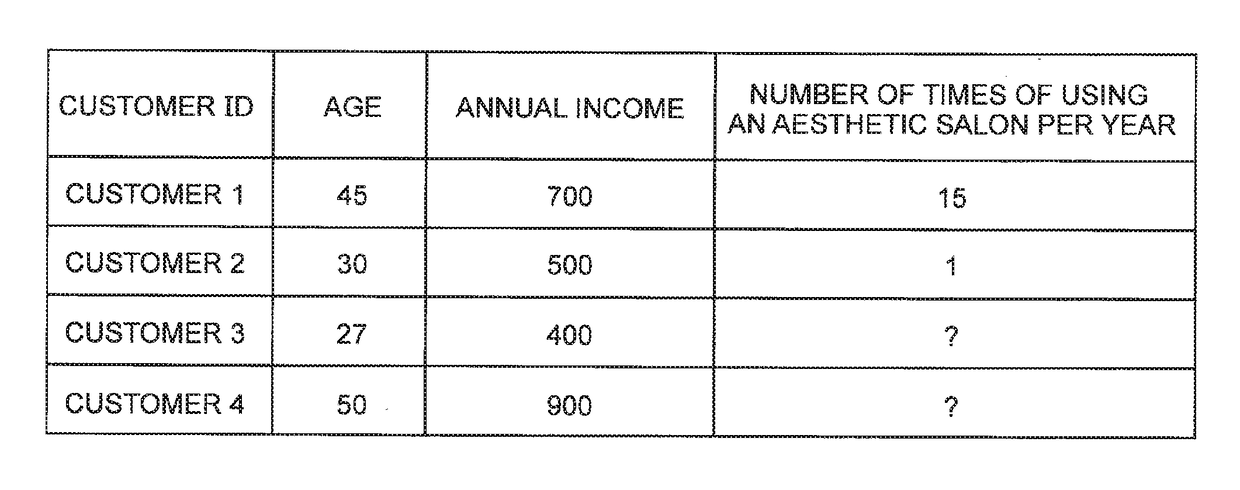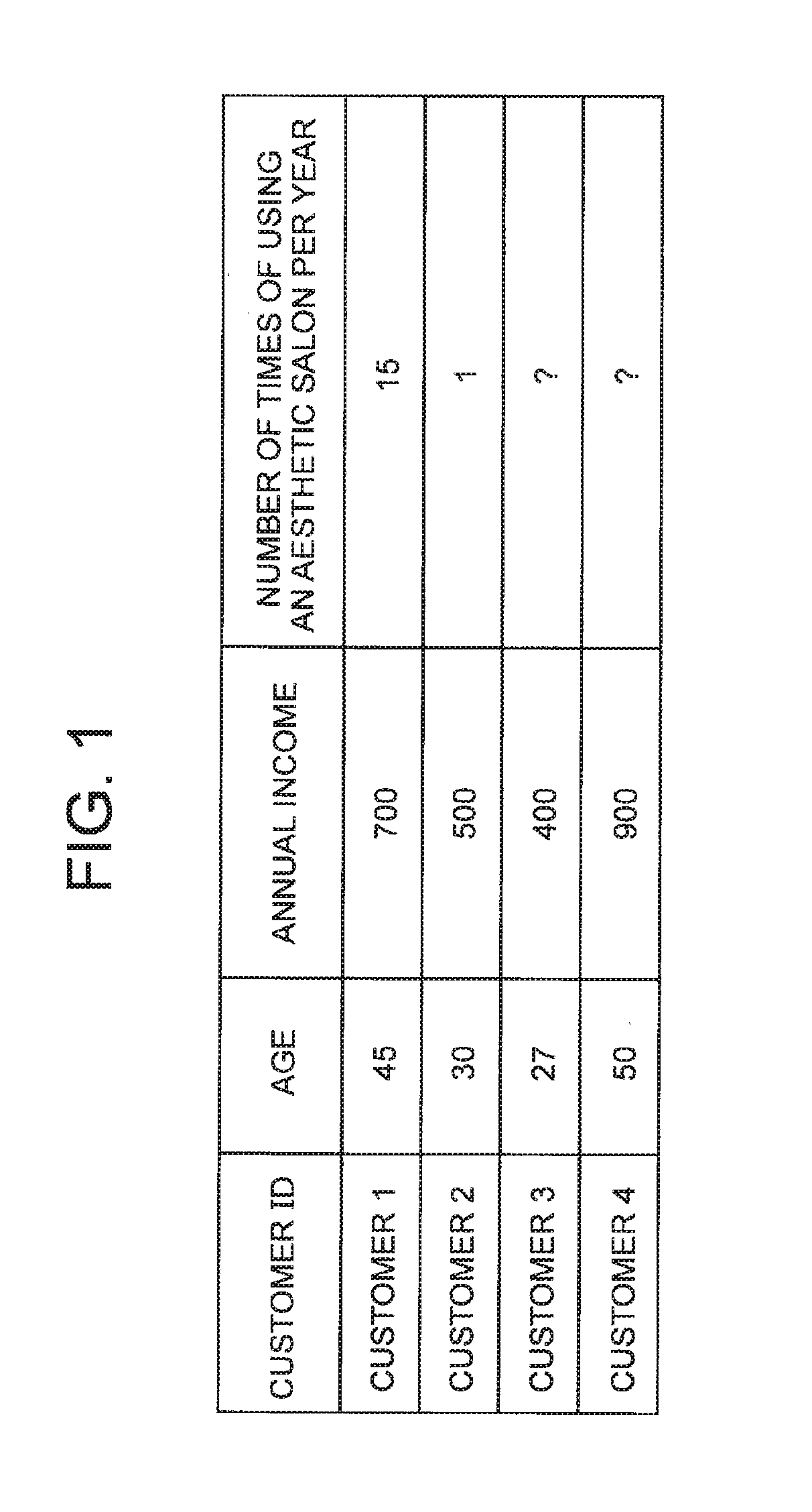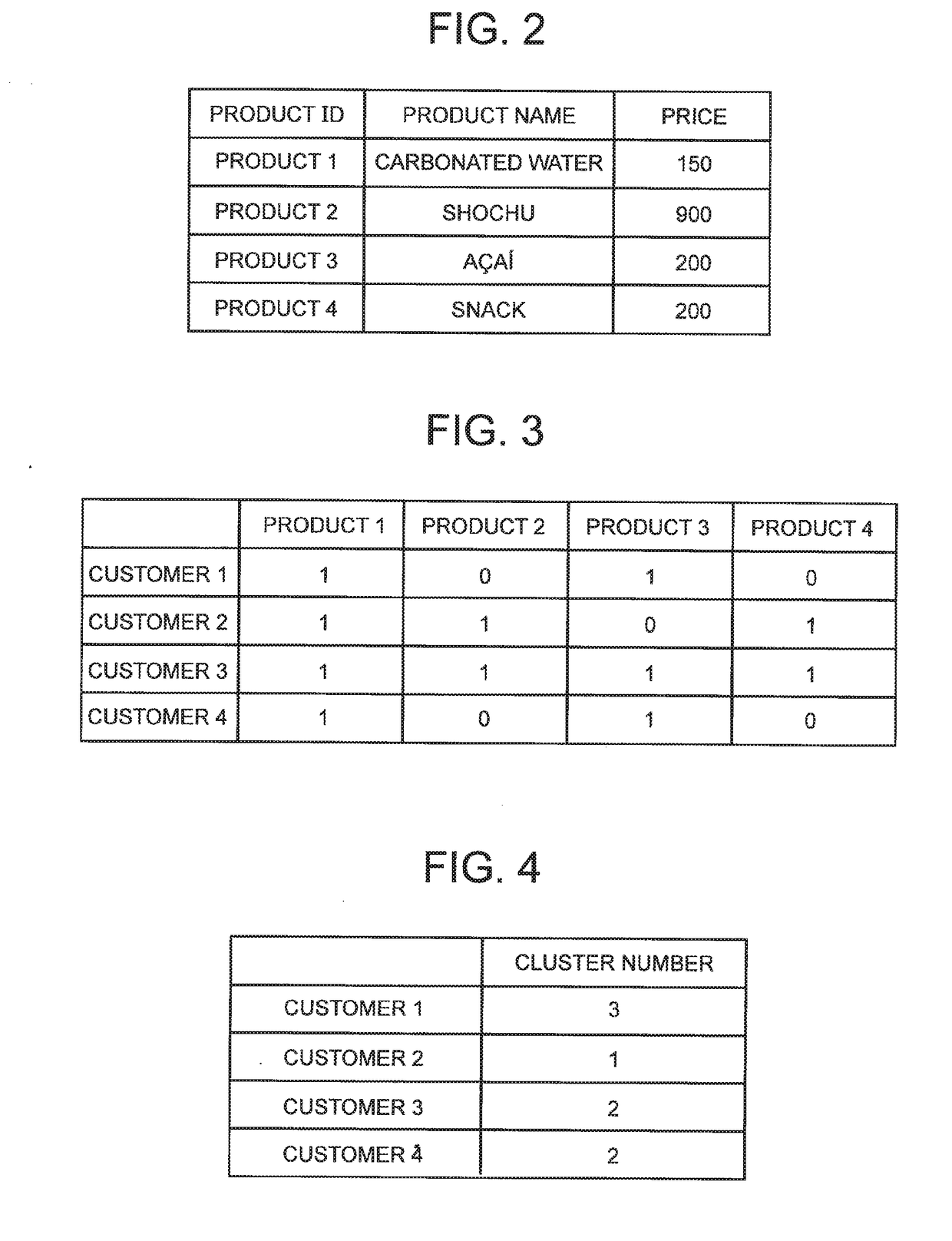Prediction system, method, and program
a prediction system and program technology, applied in the field of prediction systems and programs, can solve the problems of low prediction accuracy, large value and actual number of times of use, etc., and achieve the effect of high accuracy
- Summary
- Abstract
- Description
- Claims
- Application Information
AI Technical Summary
Benefits of technology
Problems solved by technology
Method used
Image
Examples
first exemplary embodiment
[0057]The inventor of the present invention has examined the processing of co-clustering first IDs and second IDs when the first master data, the second master data, and the fact data are given using an IRM described in Non-Patent Literature 2. Hereinafter, the flow of this processing will be described, and furthermore, in the first exemplary embodiment of the present invention, processing of co-clustering the first IDs and the second IDs when the first master data, the second master data and the fact data are given will be described.
[0058]In the co-clustering of the first ID and the second ID, a probabilistic model is held between each cluster of the first ID and each cluster of the second ID (on a direct product space of the cluster). The probabilistic model is typically a Bernoulli distribution representing the strength of the relation between the clusters. When calculating the belonging probability to one cluster with one ID (for example, the first ID), the value of the probabil...
second exemplary embodiment
[0148]In the second exemplary embodiment of the present invention, a prediction system that executes co-clustering, generates a prediction model for each cluster of the first ID, and executes prediction by the prediction model will be described.
[0149]The first master data, the second master data and the fact data are also input to the prediction system of the second exemplary embodiment of the present invention. The first master data, the second master data and the fact data in the second exemplary embodiment are respectively the same as the first master data, the second master data and the fact data in the first exemplary embodiment.
[0150]In the first master data, of the attributes corresponding to the first ID, regarding the specific attribute, the value is unknown in some records.
[0151]Further, in the second exemplary embodiment, it is assumed that the values of the respective attributes are all determined in the second master data.
[0152]Further, in the second exemplary embodimen...
third exemplary embodiment
[0184]In the second exemplary embodiment, unlike the first exemplary embodiment, a system that generates a prediction model after co-clustering is completed without repeating generation of a prediction model and co-clustering processing.
[0185]As in the first exemplary embodiment, the co-clustering system according to the third exemplary embodiment of the present invention co-clusters the first IDs and the second IDs by repeating the processing of steps S3 to S7, and generates a prediction model corresponding to a cluster. Furthermore, the co-clustering system according to the third exemplary embodiment of the present invention predicts the value of an objective variable when test data is input.
[0186]FIG. 18 depicts a functional block diagram showing an example of a co-clustering system according to the third exemplary embodiment of the present invention. Elements similar to those in the first exemplary embodiment are denoted by the same reference numerals as those in FIG. 6, and des...
PUM
 Login to View More
Login to View More Abstract
Description
Claims
Application Information
 Login to View More
Login to View More - R&D
- Intellectual Property
- Life Sciences
- Materials
- Tech Scout
- Unparalleled Data Quality
- Higher Quality Content
- 60% Fewer Hallucinations
Browse by: Latest US Patents, China's latest patents, Technical Efficacy Thesaurus, Application Domain, Technology Topic, Popular Technical Reports.
© 2025 PatSnap. All rights reserved.Legal|Privacy policy|Modern Slavery Act Transparency Statement|Sitemap|About US| Contact US: help@patsnap.com



